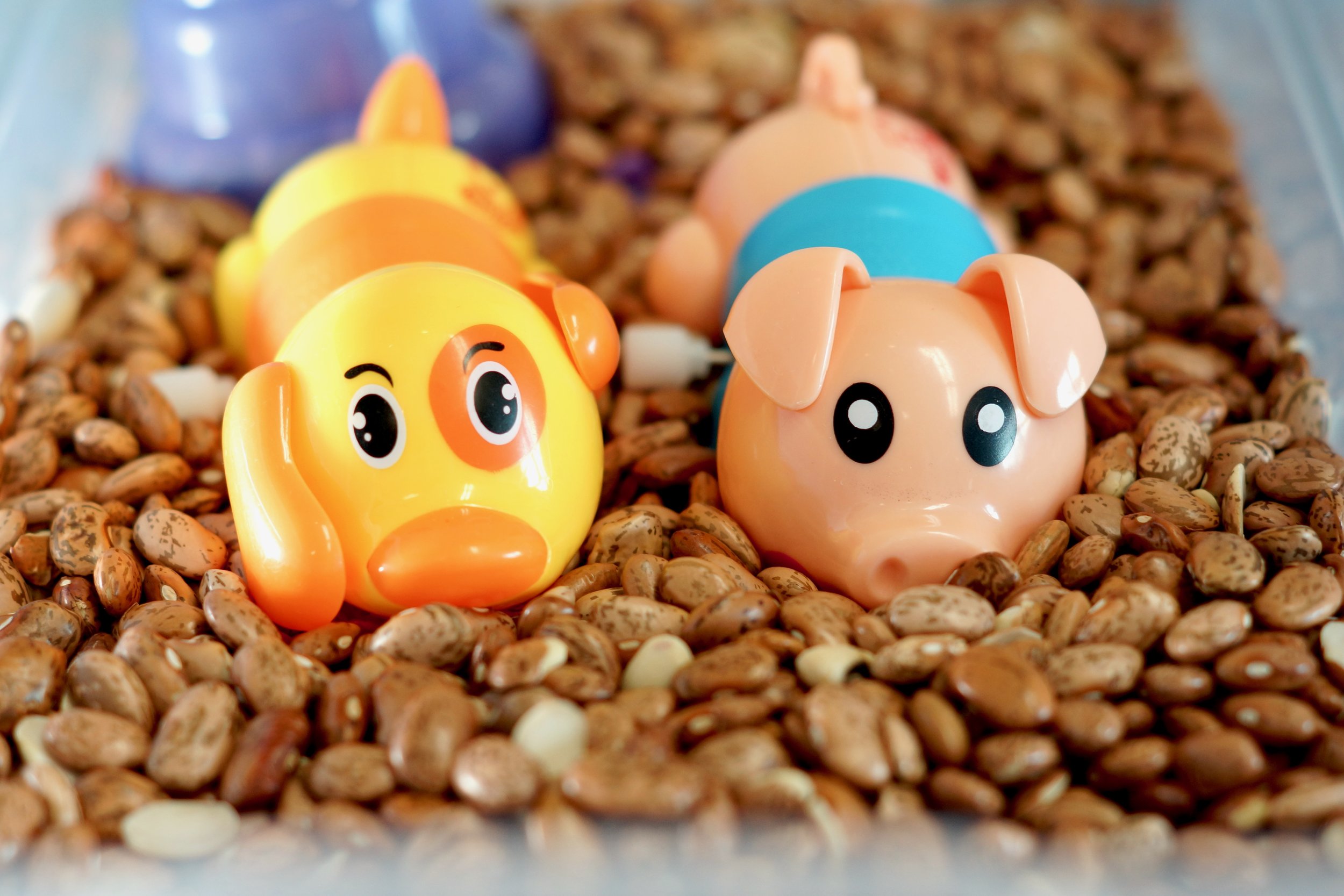Add Sensory Activities to Your Child’s Play
Sensory play means promoting whole body sensory experiences to aid learning and fun across the lifespan!
*The month of April is dedicated to Autism Awareness. “The CDC estimates that 1 in 54 children has been identified as being on the autism spectrum. In fact, many ASD therapy programs incorporate sensory play to promote language development, social interaction, motor skills, problem-solving, and more.”
Sensory input/play is often mentioned when discussing neurodivergent children…what about neurotypical kiddos? Would they benefit from it, too?
All children benefit from sensory play for brain development! Senses are how we perceive our world.
It is essential to offer opportunities that allow them to learn and interact with the world around them. Children retain information more when we incorporate multiple senses into a task.
Children’s brains are developing rapidly in the first 5 years of life.
Why is sensory play so important for children?
Sensory play can be defined as anything that activates a child’s senses (touch, smell, taste, sight, hearing, movement, and balance). KTL’s Occupational Therapists incorporate sensory play because it is a FUN way to target goals. This type of play fosters creativity, promotes language development, supports cognitive growth, improves problem-solving skills, and facilitates social interaction opportunities.
What ages of children would benefit from sensory input/play?
Individuals across the lifespan benefit from sensory input for regulation, although it looks different at different phases of development.
We begin introducing sensory experiences to our newborns. Tummy Time is a sensorimotor experience where we promote transitional movements to our infants and teach them to engage with their environment.
A toddler's sensory experience might look like an obstacle course including crawling through a tunnel, hopping like a frog, and rolling like a log.
A preschooler learning to form pre-writing strokes in flour.
An elementary-aged child writing sight words in finger paint.
Adult residents at a nursing home participate in yoga.
What skills can children develop through sensory play?
We truly cannot put enough emphasis on incorporating sensory play into all aspects of development. This type of play, incorporating our senses, is how we learn about and interact with the environment around us.
Sensory play can be used to aid in development of language, cognition, imagination, social interaction, fine motor, gross motor, problem solving, and emotional regulation.
What sensory tools or toys would you recommend?
Tune into your child’s specific strengths and interests! Incorporate them into multi-sensory experiences. For a child who is interested in animals, we might utilize the following tools/tasks:
read a tactile book about animals
use play-doh to create animals
dig for animals hidden in kinetic sand
act out animal poses paired with their sound
scavenger hunt looking for animals inside or outside
search for animal puzzle pieces hidden in a bean bin
Remember that you are your child’s best playmate, so join in the play and model away!
*Quote from a 2019 Cincinnati Family Magazine article. 


